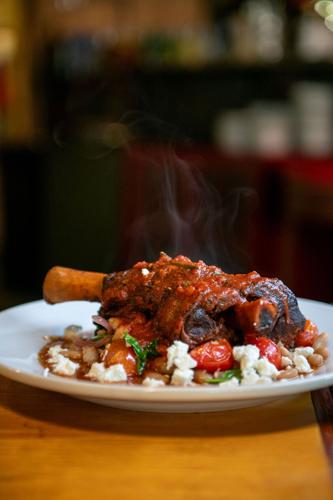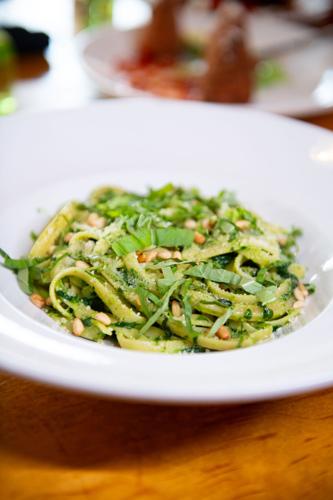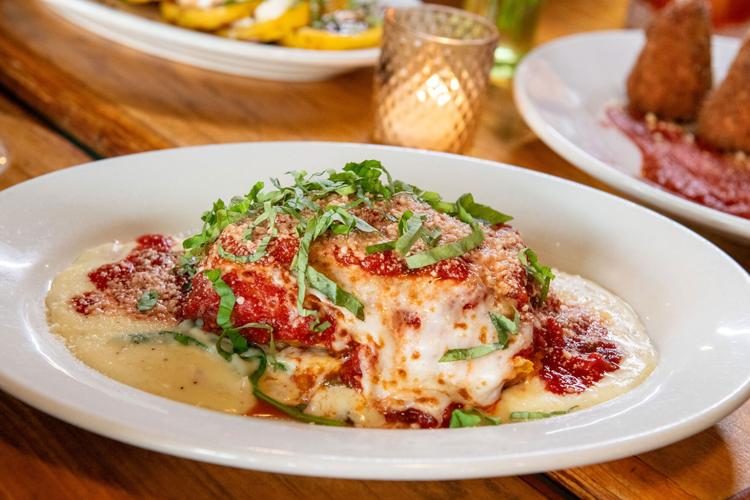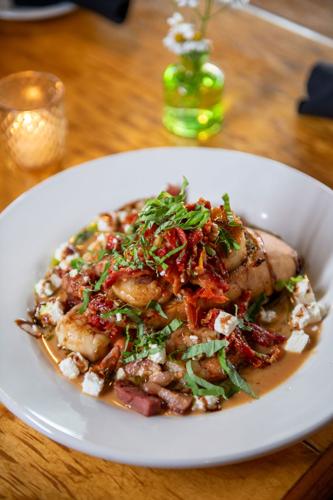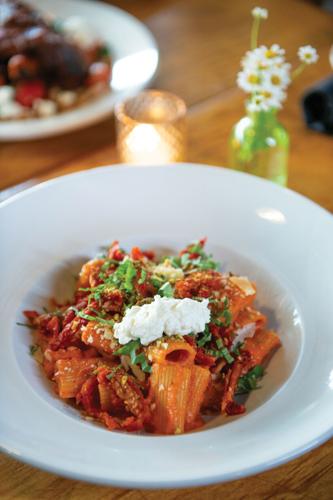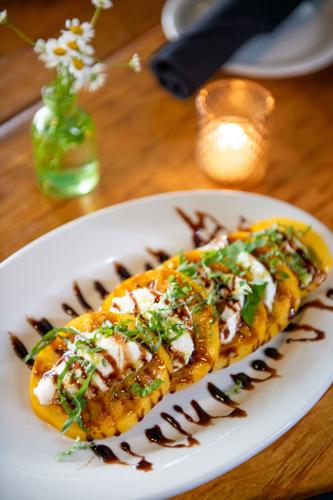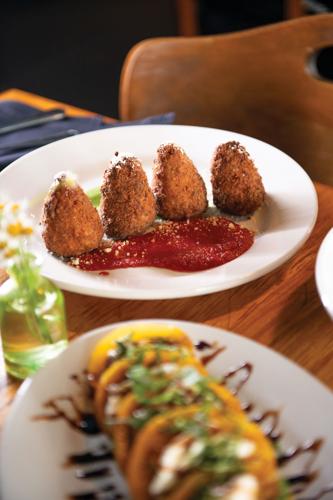
Lasagna at Caffé Nonna
If an entrepreneurial bookie created a betting market for Nashville restaurants, the smart money would go toward pizza, beer, hot chicken and the restaurant group Strategic Hospitality. Familiar restaurant news usually falls in one of two categories: buzzy grand openings and old favorites closing. Precious few underdogs survive the long odds facing independent kitchens, especially where real estate booms have remade landlords’ math over the past decade, making restaurant lifespan prediction into a tempting parlor game for locals old enough to remember Sunset Grill. In an industry of daily drama, what separates surviving city staples like Monell’s, Silver Sands or Sperry’s from departed classics like Dandgure’s, Hermitage Cafe or The Gold Rush?
From the outside, the mark of death appeared over Caffé Nonna when, in November, the 25-year-old neighborhood Italian spot got its third owner in five years. From the outside, it also began to look cleaner. And busier. The patio opened up to fit a few extra seats. The petunias bloomed in hanging beds, watered daily by Will Spiva, Nonna’s newest proprietor — a sociable industry veteran with a short attention span and the Nashville skyline tattooed on his bicep.

Fettuccini
“I didn’t want to touch the menu until I knew the restaurant better — I was really, really careful and nervous about the menu, because it had been working for 25 years,” Spiva tells the Scene five hours before service starts on a Tuesday. “I started with little things, a lot of aesthetics and cleaning and ways to maximize the space.”
Spiva notched stints inside Taqueria del Sol, DeSano Pizza, Le Sel and a handful of downtown bars before coming to Sylvan Park. His dad and stepmom had their first date at Caffé Nonna and, years later, paid Spiva’s way for a first date there with his high school sweetheart.

Sun-dried tomato pasta
“People were nervous that I was going to jack up all the prices or commercialize the Nonna experience,” Spiva says. “Or put something else here, which probably would have made more sense. Pizza and beer make a lot more money. But I didn’t buy a restaurant that I love to put a different restaurant inside of it.”
The block, a commercial strip where Murphy Road runs into McCabe Park, also benefits from some market protections. A small natural creek runs behind the building, which used to house a dry cleaner — two factors that come with strict regulatory codes. Major redevelopment — the type remaking city blocks in Midtown and East Nashville — would be incredibly daunting and expensive. Spiva describes an essential balance that determines restaurant viability in Nashville.

Lamb shank toscana
“It all has to do with the relationship between the landlord, rent and the restaurant — and then, final menu price,” Spiva says between quick tangents comparing the business models of Buttermilk Ranch, Mafiaoza’s, Locust and Josephine to make a point about 12South, where he quotes space at $150 per square foot. “A nice kitchen means big upfront investment, so you need to own the property or have a 20-year lease to make your money back. For a mom-and-pop restaurant, rent’s going up from 6 percent of your sales to 10 percent or 11 percent. If profit was 6 percent or 7 percent, you just lost your profit. You have to cut or close.”

Seafood bruschetta
Italian cocktails and an approachable wine list have helped buoy Nonna, which had strayed into the red during COVID, back to profitability. The menu emphasizes simplicity and comfort over novelty, executing classics like lasagna and arancini rather than reaching with creativity. A scratch-made cacio e pepe, flecked with salty hunks of pork, will likely become a permanent fixture after finding success in July as a blackboard special. Build-your-own pasta still dominates sales, revamped only by daily fresh pesto.

Caprese
On a menu built with Italian standards, Seafood Angelina — a lightly sauced fettuccine dragged through the ocean — is one exception. Along with the arancini, it’s one of two dishes hit with a healthy dose of saffron, the expensive aromatic spice more commonly found in Indian and Persian cuisine. Spiva contacted Nonna’s original owner, Daniel Maggipinto, for menu tips. He also hired back Maggipinto’s old head line chef, Juvi. Spiva relies on former employees from previous kitchens as his labor pool to hedge against turnover. Volatility, unpredictability and chaos spells doom for restaurants.

Arancini
Independent restaurants, especially at a lower price point, struggle against deep-pocketed chains but benefit from intimacy, character and loyal customers. A second location brings a paradigm shift, explains Spiva. Dishes must remain consistent, so supply chains dictate decisions. Daily, weekly and seasonal specials become too complicated to source reliably. Two chefs in two kitchens need to prepare every dish identically; they become simpler, incorporating more shelf-stable ingredients that can be prepped hours ahead. Nonna can use orange tomatoes for its caprese because Spiva can find them at The Produce Place, the nearby neighborhood grocer, on the days when his delivery truck only has red romas.

